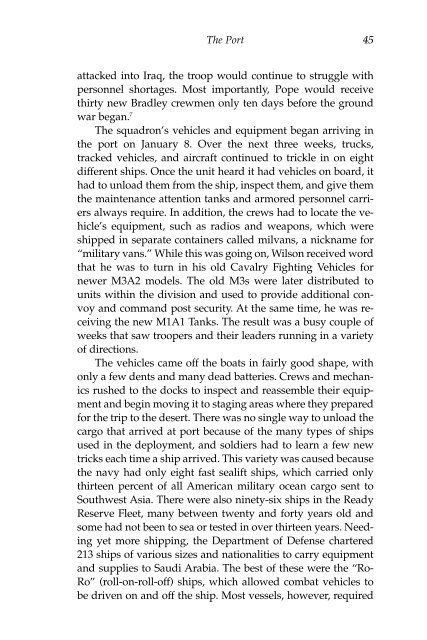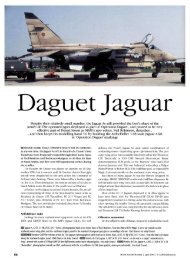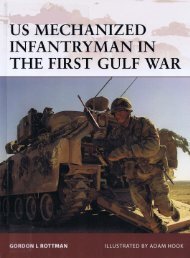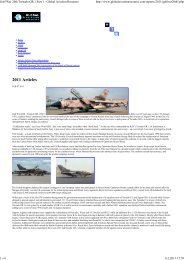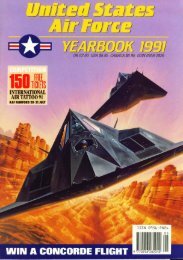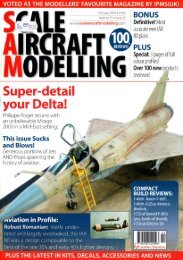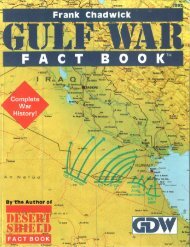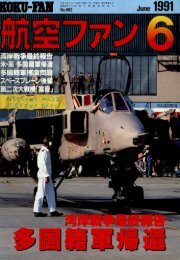The Road to Safwan: The 1st Squadron, 4th Cavalry in the 1991 ...
The Road to Safwan: The 1st Squadron, 4th Cavalry in the 1991 ...
The Road to Safwan: The 1st Squadron, 4th Cavalry in the 1991 ...
Create successful ePaper yourself
Turn your PDF publications into a flip-book with our unique Google optimized e-Paper software.
<strong>The</strong> Port 45<br />
attacked <strong>in</strong><strong>to</strong> Iraq, <strong>the</strong> troop would cont<strong>in</strong>ue <strong>to</strong> struggle with<br />
personnel shortages. Most importantly, Pope would receive<br />
thirty new Bradley crewmen only ten days before <strong>the</strong> ground<br />
war began. 7<br />
<strong>The</strong> squadron’s vehicles and equipment began arriv<strong>in</strong>g <strong>in</strong><br />
<strong>the</strong> port on January 8. Over <strong>the</strong> next three weeks, trucks,<br />
tracked vehicles, and aircraft cont<strong>in</strong>ued <strong>to</strong> trickle <strong>in</strong> on eight<br />
different ships. Once <strong>the</strong> unit heard it had vehicles on board, it<br />
had <strong>to</strong> unload <strong>the</strong>m from <strong>the</strong> ship, <strong>in</strong>spect <strong>the</strong>m, and give <strong>the</strong>m<br />
<strong>the</strong> ma<strong>in</strong>tenance attention tanks and armored personnel carriers<br />
always require. In addition, <strong>the</strong> crews had <strong>to</strong> locate <strong>the</strong> vehicle’s<br />
equipment, such as radios and weapons, which were<br />
shipped <strong>in</strong> separate conta<strong>in</strong>ers called milvans, a nickname for<br />
“military vans.” While this was go<strong>in</strong>g on, Wilson received word<br />
that he was <strong>to</strong> turn <strong>in</strong> his old <strong>Cavalry</strong> Fight<strong>in</strong>g Vehicles for<br />
newer M3A2 models. <strong>The</strong> old M3s were later distributed <strong>to</strong><br />
units with<strong>in</strong> <strong>the</strong> division and used <strong>to</strong> provide additional convoy<br />
and command post security. At <strong>the</strong> same time, he was receiv<strong>in</strong>g<br />
<strong>the</strong> new M1A1 Tanks. <strong>The</strong> result was a busy couple of<br />
weeks that saw troopers and <strong>the</strong>ir leaders runn<strong>in</strong>g <strong>in</strong> a variety<br />
of directions.<br />
<strong>The</strong> vehicles came off <strong>the</strong> boats <strong>in</strong> fairly good shape, with<br />
only a few dents and many dead batteries. Crews and mechanics<br />
rushed <strong>to</strong> <strong>the</strong> docks <strong>to</strong> <strong>in</strong>spect and reassemble <strong>the</strong>ir equipment<br />
and beg<strong>in</strong> mov<strong>in</strong>g it <strong>to</strong> stag<strong>in</strong>g areas where <strong>the</strong>y prepared<br />
for <strong>the</strong> trip <strong>to</strong> <strong>the</strong> desert. <strong>The</strong>re was no s<strong>in</strong>gle way <strong>to</strong> unload <strong>the</strong><br />
cargo that arrived at port because of <strong>the</strong> many types of ships<br />
used <strong>in</strong> <strong>the</strong> deployment, and soldiers had <strong>to</strong> learn a few new<br />
tricks each time a ship arrived. This variety was caused because<br />
<strong>the</strong> navy had only eight fast sealift ships, which carried only<br />
thirteen percent of all American military ocean cargo sent <strong>to</strong><br />
Southwest Asia. <strong>The</strong>re were also n<strong>in</strong>ety-six ships <strong>in</strong> <strong>the</strong> Ready<br />
Reserve Fleet, many between twenty and forty years old and<br />
some had not been <strong>to</strong> sea or tested <strong>in</strong> over thirteen years. Need<strong>in</strong>g<br />
yet more shipp<strong>in</strong>g, <strong>the</strong> Department of Defense chartered<br />
213 ships of various sizes and nationalities <strong>to</strong> carry equipment<br />
and supplies <strong>to</strong> Saudi Arabia. <strong>The</strong> best of <strong>the</strong>se were <strong>the</strong> “Ro-<br />
Ro” (roll-on-roll-off) ships, which allowed combat vehicles <strong>to</strong><br />
be driven on and off <strong>the</strong> ship. Most vessels, however, required


